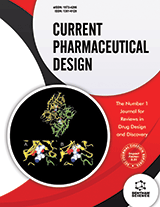Abstract
Successful liver-directed gene therapy has the potential to revolutionize medicine. Helper-dependent adenoviral vectors (HDAds) are devoid of all viral coding sequences and have shown tremendous potential for liver-direct gene therapy. In small and large animals, hepatic transduction with HDAd has resulted in high level, long-term transgene expression without chronic toxicity in a variety of disease models. Recent advancements in the large-scale manufacture of HDAd have permitted contemplation of clinical application. However, dose-dependent activation of the host innate inflammatory response remains an obstacle for clinical translation. Recent advancements in vector capsid modifications, immune modulation regimes, as well as novel routes of vector administration may yet permit clinical liver-directed gene therapy with HDAd.
Keywords: Helper-dependent adenovirus, adenovirus, large scale production, transduction, liver, hepatocytes, immune response, innate immunity, cellular immunity, transgene expression
Current Pharmaceutical Design
Title: Liver-Directed Gene Therapy with Helper-Dependent Adenoviral Vectors: Current State of the Art and Future Challenges
Volume: 17 Issue: 24
Author(s): Francesco Vetrini and Philip Ng
Affiliation:
Keywords: Helper-dependent adenovirus, adenovirus, large scale production, transduction, liver, hepatocytes, immune response, innate immunity, cellular immunity, transgene expression
Abstract: Successful liver-directed gene therapy has the potential to revolutionize medicine. Helper-dependent adenoviral vectors (HDAds) are devoid of all viral coding sequences and have shown tremendous potential for liver-direct gene therapy. In small and large animals, hepatic transduction with HDAd has resulted in high level, long-term transgene expression without chronic toxicity in a variety of disease models. Recent advancements in the large-scale manufacture of HDAd have permitted contemplation of clinical application. However, dose-dependent activation of the host innate inflammatory response remains an obstacle for clinical translation. Recent advancements in vector capsid modifications, immune modulation regimes, as well as novel routes of vector administration may yet permit clinical liver-directed gene therapy with HDAd.
Export Options
About this article
Cite this article as:
Vetrini Francesco and Ng Philip, Liver-Directed Gene Therapy with Helper-Dependent Adenoviral Vectors: Current State of the Art and Future Challenges, Current Pharmaceutical Design 2011; 17 (24) . https://dx.doi.org/10.2174/138161211797247532
| DOI https://dx.doi.org/10.2174/138161211797247532 |
Print ISSN 1381-6128 |
| Publisher Name Bentham Science Publisher |
Online ISSN 1873-4286 |
 8
8
- Author Guidelines
- Graphical Abstracts
- Fabricating and Stating False Information
- Research Misconduct
- Post Publication Discussions and Corrections
- Publishing Ethics and Rectitude
- Increase Visibility of Your Article
- Archiving Policies
- Peer Review Workflow
- Order Your Article Before Print
- Promote Your Article
- Manuscript Transfer Facility
- Editorial Policies
- Allegations from Whistleblowers
- Announcements
Related Articles
-
Turning Tumor-Promoting Copper into an Anti-Cancer Weapon via High-Throughput Chemistry
Current Medicinal Chemistry Adverse Effects of Mineralocorticoid Receptor Antagonist Administration
Current Pharmaceutical Design Visceral Adipose Tissue and Atherosclerosis
Current Vascular Pharmacology Hypotensive Natural Products: Current Status
Mini-Reviews in Medicinal Chemistry Effect of Leptin on Vascular Nitric Oxide and Endothelial Function
Current Hypertension Reviews Recent Patents on the Upgrading of Fish by-Products
Recent Patents on Chemical Engineering The Role of Transforming Growth Factor β1 in the Regulation of Blood Pressure
Current Hypertension Reviews Aldosterone, Mineralocorticoid Receptor and the Metabolic Syndrome:Role of the Mineralocorticoid Receptor Antagonists
Current Vascular Pharmacology Anaemia, Polycythaemia and Chronic Heart Failure
Current Cardiology Reviews Cardiovascular Risk and Endothelial Dysfunction: The Preferential Route for Atherosclerosis
Current Pharmaceutical Biotechnology Drugs Affecting Blood Pressure Variability: An Update
Current Pharmaceutical Design Managing Bleeding Complications in Patients Treated with the Old and the New Anticoagulants
Current Pharmaceutical Design The Fixed Combination Efficacy Assessment in Patients with Secondary Neovascular Glaucoma and Diabetes Mellitus
Current Diabetes Reviews The Impact of Cardiovascular Diseases on Cardiovascular Regulation During Exercise in Humans: Studies on Metaboreflex Activation Elicited by the Post-exercise Muscle Ischemia Method
Current Cardiology Reviews Cardiac and Pulmonary Manifestations in the Antiphospholipid Syndrome
Current Rheumatology Reviews Pros and Cons of Aggressive Blood Pressure Lowering in Patients with Type 2 Diabetes
Current Vascular Pharmacology Nigella Sativa Improve Redox Homeostasis in Heart and Aorta of Diabetic Rat
Current Nutrition & Food Science Tyrosine Kinase Inhibitors – A Review on Pharmacology, Metabolism and Side Effects
Current Drug Metabolism Epidemiology, Prognosis and Prevention of Non-Traumatic Intracerebral Hemorrhage
Current Pharmaceutical Design Artery of Percheron Infarction: A Characteristic Pattern of Ischemia and Variable Clinical Presentation: A Literature Review
Current Medical Imaging


























